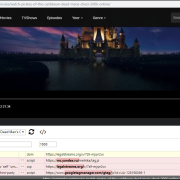Pencil Whipped: The Hidden Problem Behind Fake Productivity

In today’s fast-paced professional world, productivity has become a badge of honor. Employees are rewarded for meeting deadlines, checking boxes, and reporting completed tasks. Yet beneath the surface lies a growing issue—“pencil whipping.” This term refers to the act of appearing productive without truly achieving meaningful results. It’s the illusion of hard work, the mirage of progress, and one of the biggest challenges facing modern organizations.
The phrase “pencil whipped” originates from the old practice of hastily signing off paperwork with little or no verification. In digital terms, it has evolved into ticking checkboxes in software systems, approving reports without review, or producing shallow results that look impressive but lack real impact.
What Does ‘Pencil Whipped’ Mean?
To be “pencil whipped” means to create a false sense of completion. The act often involves completing forms, safety checklists, or project tasks superficially just to meet compliance or performance standards. The term is frequently used in industries like construction, manufacturing, and government sectors—but it applies to any environment where paperwork or digital tracking systems are used to measure productivity.
Employees pencil whip for many reasons: pressure to meet deadlines, fear of reprimand, or lack of motivation. Whatever the cause, the outcome is the same—tasks that appear complete on paper but add little real value.
The Psychology Behind Fake Productivity
Fake productivity is deeply tied to human psychology. People want to appear competent and efficient, especially in performance-driven cultures. When managers measure output by visible actions—emails sent, reports submitted, meetings attended—employees naturally focus on those metrics instead of meaningful outcomes.
This behavior leads to “activity bias”—the preference for being busy over being effective. Employees equate motion with progress. They check boxes, fill forms, and rush through tasks to look productive. Over time, this mindset becomes ingrained, making pencil whipping not just a habit but a workplace norm.
The Hidden Costs of Being Pencil Whipped
The cost of fake productivity is immense, though it often goes unnoticed. On the surface, teams seem efficient, reports look clean, and metrics show improvement. But underneath lies a trail of missed opportunities, quality lapses, and disengaged employees.
When employees pencil whip:
- Quality suffers. Errors go unchecked and safety protocols are ignored.
- Trust erodes. Supervisors begin doubting the accuracy of reports.
- Culture declines. Genuine effort is replaced by shortcuts.
- Innovation stalls. Teams focus on appearances, not progress.
The illusion of progress leads organizations to make decisions based on inaccurate data, ultimately costing time, money, and credibility.
The Role of Management in Fake Productivity
Leadership plays a major role in creating the conditions for pencil whipping. When managers emphasize metrics over meaning, they encourage quantity over quality. For example, when a manager rewards employees for the number of reports completed rather than the insight those reports provide, the message becomes clear—completion matters more than contribution.
Micromanagement, excessive paperwork, and unrealistic deadlines also contribute. When employees feel their effort won’t be recognized, they focus on survival tactics—doing what looks good instead of what works.
True leadership recognizes this pattern and shifts focus from mere output to genuine impact.
How Technology Can Both Help and Hurt
Modern tools and automation systems were designed to increase productivity—but they can also enable pencil whipping. Project management software, automated forms, and digital checklists make it easier to complete tasks quickly, but they can also make it easier to fake completion.
However, technology isn’t the enemy. When used properly, it can track accountability, record progress accurately, and provide transparency. The key is how organizations implement these tools. Instead of relying solely on numbers or timestamps, systems should be integrated with qualitative feedback, peer reviews, and performance analytics that focus on outcomes rather than outputs.
Signs Your Organization Is Pencil Whipped
Recognizing pencil whipping isn’t always easy, but several red flags can help identify it.
Common signs include:
- Repetitive or identical entries in reports and checklists.
- Tasks marked “complete” with no visible results or follow-up.
- Employees rushing through digital or physical paperwork.
- A culture where speed is valued more than accuracy.
- Frequent errors discovered after “completed” work.
- Teams meeting goals on paper but failing to deliver real change.
If any of these patterns sound familiar, it’s time for an organizational reality check.
Replacing Fake Efficiency with Authentic Productivity
The cure for being pencil whipped begins with redefining what productivity means. True productivity is not about doing more—it’s about achieving more that matters.
Here’s how organizations can restore authenticity:
- Encourage outcome-based goals. Measure results, not just tasks.
- Simplify reporting systems. Eliminate redundant forms that encourage shortcuts.
- Foster psychological safety. Allow employees to speak up about unrealistic workloads.
- Promote quality feedback loops. Let managers and peers review results collaboratively.
- Train for purpose. Help employees understand why their tasks matter.
When people see their work’s real impact, they naturally focus on meaningful productivity instead of fake busyness.
Building a Culture That Values Depth Over Speed
A healthy organizational culture discourages pencil whipping by rewarding depth, creativity, and critical thinking. This means shifting focus from how much gets done to how well it’s done.
Encourage discussions that question the purpose of each process. Allow time for reflection and refinement. Recognize those who improve systems, not just those who complete them. When leaders celebrate thoughtful work and integrity, employees feel empowered to slow down, think, and deliver genuine quality.
This cultural transformation requires consistency. When leaders model authenticity and admit when systems need change, it builds trust and accountability across all levels.
Moving from Illusion to Impact
Escaping the cycle of fake productivity means confronting uncomfortable truths. Many organizations cling to traditional metrics because they’re easy to measure, even if they don’t reflect success. But what’s measurable isn’t always meaningful.
To move forward, companies must design systems that reward progress, not performance theater. This involves combining quantitative data with qualitative insights—measuring not just what gets done, but how it contributes to growth, safety, and innovation.
When organizations align performance metrics with genuine goals, they move from illusion to impact.
Conclusion
“Pencil whipping” may seem harmless—a shortcut here, a rushed signature there—but its long-term consequences can erode the foundation of any organization. It’s a symptom of deeper issues: poor communication, misplaced priorities, and a misunderstanding of what productivity truly means.
By valuing authenticity over appearance, quality over quantity, and purpose over pressure, businesses can eliminate fake productivity and foster environments where every action has meaning. The future of work belongs to those who measure success not by how busy they look, but by the real difference they make.
FAQs
1. What does it mean to be pencil whipped?
Being “pencil whipped” means a task appears complete but wasn’t actually performed with diligence or verification. It’s fake productivity—done for the sake of compliance or appearances.
2. Why do employees pencil whip tasks?
Employees often pencil whip because of tight deadlines, fear of penalties, or unclear priorities. It’s a coping mechanism in cultures that value speed and numbers over quality.
3. How can management prevent pencil whipping?
Managers can prevent it by creating realistic expectations, simplifying reporting, and emphasizing outcomes rather than output. Encouraging honesty and reducing unnecessary bureaucracy are key steps.
4. Is pencil whipping always intentional?
Not always. Sometimes employees don’t realize they’re doing it. They may believe they’re being efficient when in fact they’re skipping essential steps or quality checks.
5. What’s the first step to stop fake productivity?
The first step is awareness. Recognize the signs of pencil whipping in your organization and start redefining what productivity means—focus on purpose, results, and impact.
Also read: How Much Espresso in a Latte: The Ultimate Guide for Coffee Lovers











